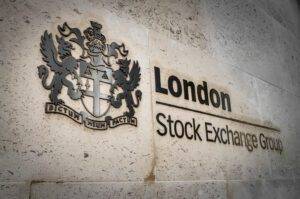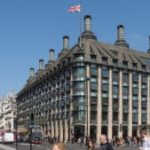
The London Stock Exchange has ended the year trailing rival markets in Europe and the US, as a stagnating economy and a volatile political climate deterred investment and cast a shadow over the nation’s economic prospects.
The FTSE 100 index of blue-chip companies reached 7,733 points on Friday, the final trading day of the year. While a late rally helped the index to its highest closing level since late May, it has gained just under 4% since January, compared with a global average of 20%, as measured by the MSCI All Country World Index.
As in previous years, the FTSE 100’s lack of technology companies left it floundering against Wall Street, where the S&P 500 index has jumped by 25% this year to the brink of a record high.
The Nasdaq Composite index has risen by 45% this year, lifted by a boom in big tech stocks such as the chipmaker Nvidia, whose shares have soared by 240% as the boom in artificial intelligence drove demand for its high-end semiconductors.
Germany’s DAX index rallied by 20%, while France’s CAC gained 16.75% and Italy’s FTSE MIB surged almost 30%, as European markets recovered from losses in 2022.
The pan-European Stoxx 600, which tracks the largest companies across European markets, gained more than 12%.
Susannah Streeter, the head of money and markets at Hargreaves Lansdown, described the FTSE 100’s 3.8% rise this year as “paltry” when compared with its international peers.
“Britain’s blue-chip index still appears unloved with attention grabbed by the bright lights of Wall Street and the tech-heavy makeup of New York’s exchanges, with a frenzy for all things AI fuelling buying behaviour,” Streeter said.
“Even though the Brexit hangover has eased, the UK’s stagnating economy and volatile political scene of recent years appears to be putting off investors,” she added.
The year started brightly for the FTSE 100. It broke through the 8,000 points mark for the first time, hitting a record high of 8,047 points in mid-February. But trading through the rest of the year was choppy, as concerns over the UK’s weak growth and rising interest rates weighed on stocks.
The smaller FTSE 250 index of medium-sized companies had a slightly better year, gaining about 4.5%.
Rolls-Royce was the top riser on the FTSE 100 this year. The engineering company gained 220% as traders welcomed the turnaround plan being implemented by the new chief executive, Tufan Erginbilgiç.
Rolls’s strength helped the UK’s aerospace and defence sector to rise by more than 67% in 2023, also aided by a 30% jump in shares in the weapons maker BAE Systems, while the aerospace manufacturer Melrose’s share price doubled this year.
At the other end of the leaderboard, the mining company Anglo American fell by 39% this year, a dire performance that raised speculation it could become a takeover target. In December, Anglo cut its production outlook, after problems with iron ore and copper mining.
Shares in the wealth manager St James’s Place lost 37%, in a year in which regulators pressed it to revamp its fee structure to reduce overall charges for existing investments.
Not every international stock market rallied this year. China’s CSI 300 index fell by more than 11% in 2023, as weak economic growth, a liquidity crisis in the property sector and geopolitical tensions all weighed on shares.
The pound has enjoyed its best year against the US dollar since 2017, gaining 5% as it climbed from $1.21 in January to $1.27 at the end of December.
But that rally was partly down to the dollar’s weakness; the greenback lost about 2% against a basket of currencies. Traders anticipate several cuts to US interest rates in 2024, as the Federal Reserve tries to achieve a “soft landing” – lowering inflation without causing a recession.
Read more:
FTSE 100 ends year up 3.8% but trails rival markets in Europe and US






